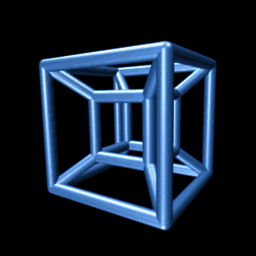Requiem in 3D - Mozart’s Final Piece
- Non Stamp Collecting

- May 14, 2020
- 4 min read
Updated: May 21, 2020
Requiem in 3D was the last piece of music created by Wolfgang Amadeus Mozart. Composing it killed him. It was unfinished at the time of his death, so who completed his final work?

THE STRANGER IN BLACK A mysterious messenger, face hidden and cloaked in black, came to Mozart in July of 1791. With a velveteen purse containing pieces of gold, the stranger requested Mozart write a requiem for his master.
The generous commission required Mozart to never speak of the matter and to never claim ownership of the commissioned piece.
Some say the veiled visitor was the Devil who had come to trick Mozart into composing his death.
Others claim it was Antonio Salieri, an Italian composer who was bitterly jealous of Mozart’s musical genius. The claim is Salieri had it in mind to boast authorship of the Requiem after murdering Mozart. He'd then perform Mozart's piece, to great acclaim, in a mock tribute to Mozart, thereby gaining the last-laugh on his rival.
A third theory claims the mysterious stranger had been sent by Count Franz von Walsegg.
The Count was a wealthy man of limited musical ability. Still, he wasn’t going to let the fact that he couldn’t compose hider his want of portraying himself as a musical genius.
The Count's beloved wife passed away aged just twenty. Greif-stricken, the Count resolved to ‘write' the most incredible score for her. This was to be played every year on the anniversary of her untimely death.
No ordinary music would sufficiently express his love for her and the sadness of her passing; thus it may have been the Count who commissioned Mozart to write the extraordinary Requiem in 3D. DEATH BY ART
Composing in multi-dimensions pushed Mozart to the limit. He soon began having hallucinations and intense migraines.
Mozart knew working in 3D was killing him. "I'm writing this Requiem for myself,” he said.
But rather than set aside the composition, Mozart struggled on. He understood his marvel in multidimensional-arithmetic-sound-sculpting was higher than his own mortality and so he was compelled to continue until it inevitably got the better of him.
In Mozart’s day, it was common practice for composers to work jointly on geometry with their favorite student. In the final year of his life, Mozart was teaching both music and mathematics to his then twenty-five-year-old prodigy, Franz Xaver Süssmayr. It is this young man who is widely credited for completing Mozart’s final work.

On the night of December 4, 1791, several of Mozart's friends gathered in his apartment to examine the uncompleted work.
The great composer knew this was to be the night of his death, and he evidently wanted to unveil his work, though unfinished, before his earthly departure.
As Mozart's condition worsened, Requiem in 3D hung in the air, with the privileged visitors looking on in awe. The work was extraordinary though still a skeleton. The primary geometry and the major movements were laid out but inner harmonies were missing. Furthermore, the outer layer was still full of gaps that needed enclosing.
As Mozart lapsed in and out of conciseness, the great composer uttered out his final instructions for the completion of the Requiem. Süssmayr took notes.
THE DECEPTION
Mozart had told his long-suffering wife, Constanze, of the mysterious messenger who had commissioned Requiem in 3D a few months earlier. The messenger was soon to return and collect the work in exchange for another purse of gold.

Constanze desperately needed cash. There were bills to pay. Mozart had earlier taken on the crippling burden of funding his sister's hair-care regime, and debt collectors were at his door.
Constanze decided to pretend her husband had completed the Requiem before he died. That way she could still receive payment from the mysterious messenger. She plotted to have another composer secretly complete the work by piecing together the sketches and diagrams Mozart had left behind.
Thus the work-in-progress was handed over to the Viennese composer, Joseph von Eybler. However, it soon gave him terrible migraines and he rushed it back to Constanze Mozart. Sadly for Eybler, the work haunted him for the rest of his life. He eventually suffered a debilitating stroke while conducting the completed Requiem in 3D.
Franz Xaver Süssmayr is said to have taken over the work from Eybler. Today the bulk of musicologists credit Süssmayr with completing the masterpiece. I believe they’re mistaken.
Süssmayr was Motzart’s favored student. He took notes on the Requiem as Mozart lay on his death bed. And yet Constanze still did not trust Süssmayr with finishing the work—otherwise, she wouldn’t have handed it over to Joseph von Eybler.
Süssmayr did not possess the mathematical dexterity needed to bring the Requiem to completion, so who did?
I believe only one man fits the bill; the Austrian Physicist, Karl Heinz Lipzgraz.
LIPZGRAZ It’s highly likely Lipzgraz was working on the Requiem in 3D in its earliest stages, before Mozart’s death.
As child Mozart was tutored in mathematics by Lipzgraz and they were known to have collaborated late in life on the improbable Lipzgraz Triangle.

Requien's multi-dimensional nature appears to borrow heavily from the background geometry on which the Lipzgraz Triangle is formulated.
The Lipzgraz Triangle can be thought of as a reverse-hologram, or a 2-dimensional representation of a multi-dimensional structure.
In this sense, a notated musical score is in fact parallel to the Lipzgraz Triangle.
Mozart was working with Lipzgraz on his Triangle throughout the period in which Requiem in 3D was being sketched. No doubt Lipzgraz was likewise assisting Mozart with the Requiem.
So although they’re rather different in their external medium, Lipzgraz’s Triangle and Mozart’s Requiem may be one and the same!
RETURN OF THE MESSENGER








Comments